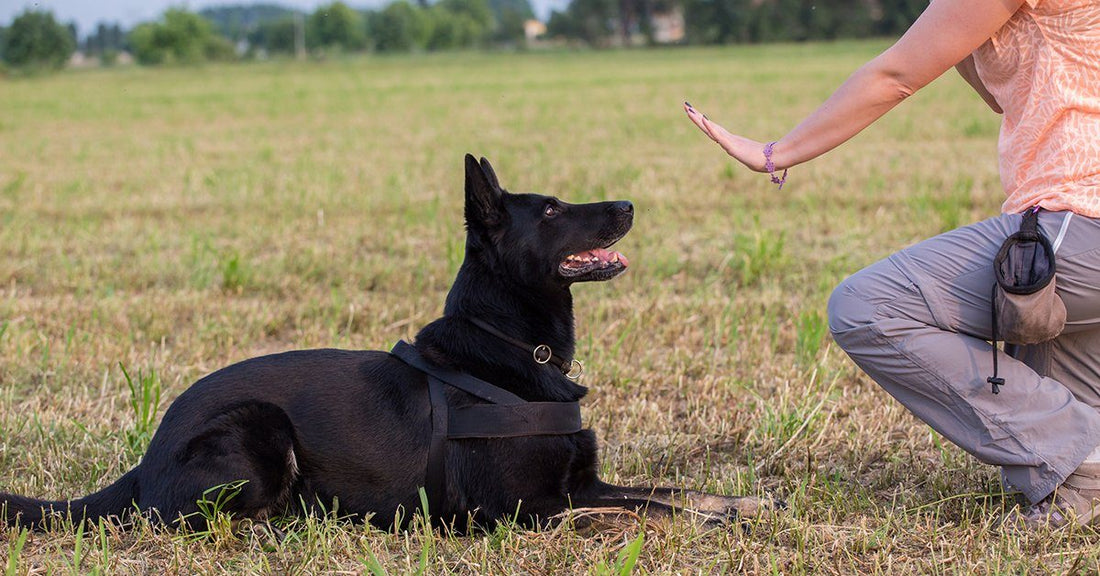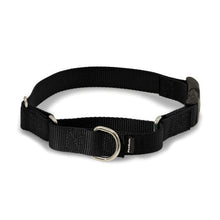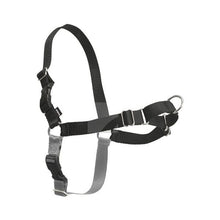7 Popular Dog Training Methods – Which One Is Best For Your Dog?

There are many types of dog training methods as well as eclectic blends of them all. The best training methods take the dog and owner into consideration and are never one size fits all.
Dog lovers are very passionate about dog training. Bring up the subject and much like debating the best dog food, there are many opinions and thoughts on the best formula.
With training, there is no wrong or right answer for all dogs or owners, however, most will agree that the health, safety, and happiness of the dog is the most important thing.
1. Positive Reinforcement
Positive reinforcement dog training is reward based training. The theory behind positive reinforcement is that when you reward a dog for doing something you want them to do, they will repeat the behavior.
The goal of positive reinforcement is to encourage the dog’s good behavior and reward training accomplishments by making them feel good about themselves. The end goal is that not only will the dog be well trained, they won’t engage in negative behaviors because they receive no reward for doing them.
Positive reinforcement is non-confrontational. When undesirable behaviors are exhibited, the owner determines the underlying cause of the behavior and works out a solution to avoid the behavior in the future by offering an alternate solution.
This type of training is based on respect and mutual trust. It is the opposite of human dominance and dog submission. It requires patience, consistency, clear guidance, and repetition.
What motivates each dog is different but popular rewards include treats, praise, toys, and affection. The success of positive reinforcement is determined by how well you understand, communicate, and can motivate the dog. It also includes learning why a dog behaves a certain way and alerting that behavior by offering a solution.
Positive reinforcement is sometimes referred to as force free and pain free training.
2. Clicker Training
Clicker training is a form of positive reinforcement training in which a clicker is used to mark desired behavior. Clicker training is very popular and is used by professionals, with a wide variety of animals, and by many dog owners.
In clicker training, the handler marks or clicks the desired behavior the instant the dog does it and then rewards the dog. As the dog catches on, it quickly learns that the click means a reward is coming and dogs are adapt at understanding exactly what behavior was marked.
One great advantage of clicker training is when the dog doesn’t get it right the first time, the click is not delivered, but no other negative association is needed. When the behavior is achieved, it is marked at the exact moment it happened so it helps eliminate confusion.
Clicker training tends to be fun for owners, dogs, and is instantly rewarding. It’s also inexpensive and easy to learn.
3. Scientific Training or Science Based Training
Scientific training, also called learning theory, focuses on how dogs learn. The methods rely heavily on canine behavioral studies to determine optimal training methods. Proponents of this type of training immerse themselves into the study of dog behavior then formulate training programs to utilize what they have learned.
Because of this, it is hard to define an exact method of scientific training because knowledge is constantly changing and each trainer or dog owner will have their own interpretation and style of translating the data into a training program.
The study relies heavily on biology and psychology and some refer to it as an art, similar to practicing the art of medicine. This type of training attempts to harness the physiology of a dog and funnel in into a customized training program.
Scientific training encompasses genetics, biology, and social perspectives. For example, there is a big difference between the behavior of a border collie and a shih tzu so the training of each breed would be vastly different.
A trainer with expertise into certain breeds of dog may have great results with their training programs, such as training working breeds. However, they would not have the same success using the same training methods on pugs.
Scientific training is not a one size fits all training method.
4. Relationship Based Training
Relationship based dog training can encompass many different styles of training with the focus on individualized training programs that work best for the dog and owner.
As the name suggests, the training chosen is based on the relationship the owner has with their dog and what motivates the dog. The training is designed to foster a strong bond between dog and owner while setting the dog up to succeed.
In relationship based training, the owner learns how to teach the dog by using whatever system motivates the dog to learn. The primary focus is always on the relationship between dog and owner as well as mutual cooperation.
For example, a dog with a short attention span might be trained in a quiet location without distractions; a dog that loves to play fetch might be given that as a reward rather than a treat; a high energy dog may go for a long walk before training starts in order to set the dog up for success.
Relationship based training also builds on previous successes and focuses on keeping the relationship between dog and owner at the forefront at all times.
Relationship based training works by understanding the dog’s limitations and understanding what the dog needs to succeed.
5. Mirror Method
Mirror method is a less popular form of positive reinforcement that also uses a clicker. In this form of training, the handler encourages the dog to mirror or mimic their actions.
Since dogs will naturally mimic each other and their owners, as well as pick up on their emotional state, it’s possible to train a dog to follow an action. If the trainer sits, the dog may sit and when they do, the behavior is marked with the clicker and repeated.
Training and socialization is encompassed with this training, which involves no punishment or negativity. Most dog owners have probably engaged in some type of mirror method training without even realizing it.
Mirror method training is a very physical way to train dogs and probably not for everyone.
6. Alpha Dog or Dominance
Alpha dog and dominance training embraces the notion that dogs view their family as part of the pack and as pack leader, the owner needs to be the dominate figure or alpha.
More than just a training method, this mentally is carried through to daily life. The alpha is in charge and the dog is the submissive subject. As such, the dog will not develop negative behaviors or aggression because it’s not allowed by the pack leader.
With dominance training, the dog follows the owner and not the other way around. The owner goes in and out of the house first, will often have the dog sit and wait to be released, the dog sits calmly waiting for meals, and often has a special ‘place’ in the house to rest or take time out in.
Being the alpha should not have a negative or abusive connotation. The alpha leads by confident example and the dog is given training, love, affection, praise, food, and corrections in a structured environment, caring environment.
Different types of actual training methods can be used to teach commands to the dog, but the owner maintains clear structure the dog must follow. This type of training is popular with dogs with behavior problems, dominate or headstrong dogs, and working breeds.
Dominance training should be respect driven not fear driven.
7. Electronic Training
Electronic training involves the use of an electronic collar that delivers an electrical signal to the dog. The purpose of an electronic collar is not to ‘shock’ the dog as many people believe but rather to deliver an impulse to mark and correct an unwanted behavior.
Electronic collars, also called e-collars and shock collars, have gotten a bad rap from misuse and overuse, especially inexperienced hands. In general, electronic collars are never used to train new commands. Rather, they are typically used to correct unwanted behavior or communicate with a dog from a distance.
The timing of corrections, the strength of the correction, and the delivery of the correction are of the utmost importance with this type of training. Punishment, pain, delayed signals, and inconstancy can easily create more problems than they solve.
Most dogs will never require an electronic collar. In some instances, e-collars can be a great training tool but only with an owner willing to learn, is very experienced in their use, or by a professional trainer.
Misuse of electronic collars can cause injury, panic, anxiety, aggression, fearful behavior, confusion, stress, mistrust, and behavioral problems. It also focuses on what a dog shouldn’t do rather than what they should.
Electronic collars are not very useful in teaching dogs commands and are more geared for correcting behavior.
























